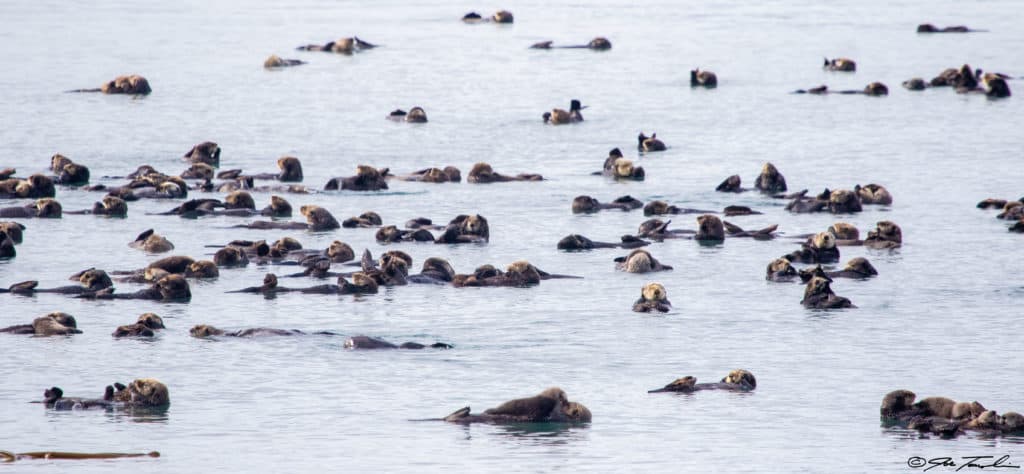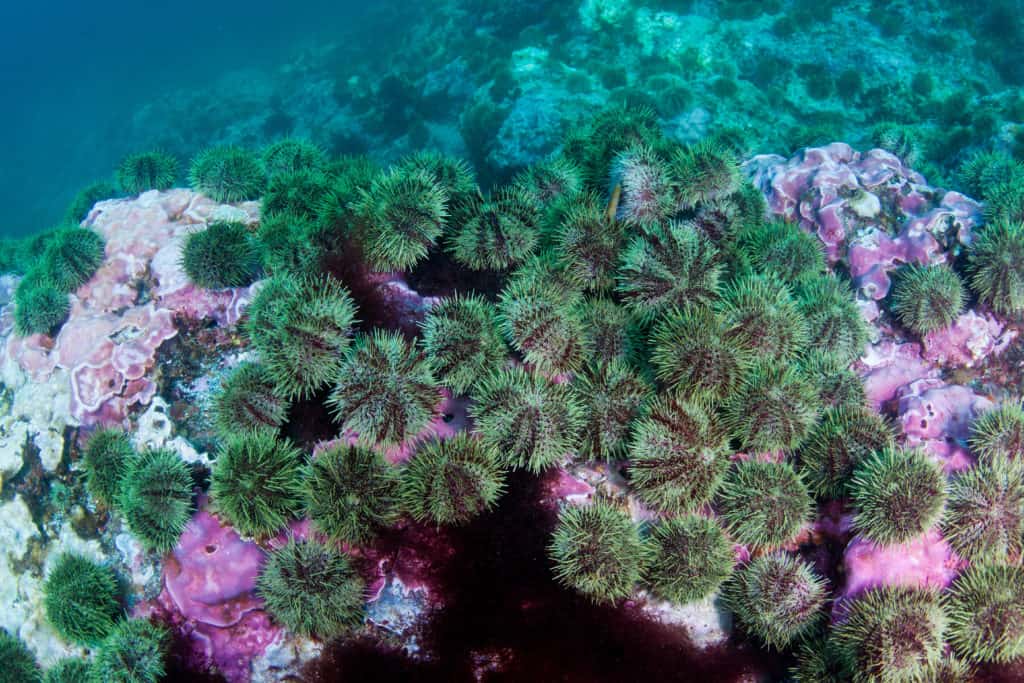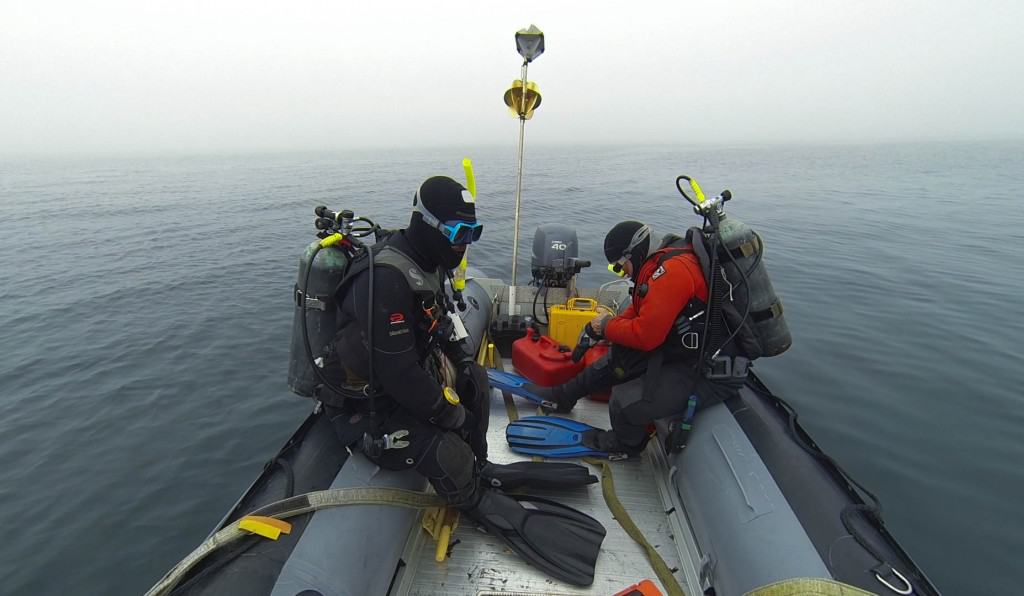Share this article
Lack of sea otters hurts Alaskan reefs
A combination of climate warming and loss of sea otters is harming the reefs that underpin Alaskan kelp forests in the Aleutian Islands.
“Despite the fact that the Aleutian Archipelago is remote and largely uninhabited, it nonetheless has a long history of predator exploitation, and is also at the front lines of climate change,” said Douglas Rasher. A senior research scientist at Bigelow Laboratory for Ocean Sciences, Rasher led a study published in Science looking at the region’s massive, living reefs.
This subpolar ecosystem is already experiencing rapid seawater warming and acidification as a result of carbon dioxide emissions being put into the atmosphere, Rasher said. After a crash of the region’s sea otter (Enhydra lutris) population in the 1990s, Rasher and colleagues began to worry the disappearance of this keystone predator was compounding the impacts of climate change. Fewer sea otters would mean that sea urchins, unchecked by otter predation, would abound. And that could lead to sea urchins overgrazing the massive, calcified red alga (Clathromorphum nereostratum) that covers these reefs and supports an abundance of sea life.

Researchers suggest that restoring sea otters can buy them time to help restore the Aleutian kelp forest. Credit: J. Tomoleoni/USGS
So the team went on an expedition to delve into how the long-lived reefs look today, how abundant they are, and to what degree sea urchins are grazing on them.
“The only way to look at a remote ecosystem like this is by using a large research vessel,” Rasher said. “From the middle to the end of the island chain, there’s no support infrastructure.”
From the vessel, they deployed small boats and set off scuba diving over the reefs, taking note of what they looked like and quantifying sea urchin overgrazing. What they saw alarmed them. “These reefs are long-lived and ecologically important, but they’re rapidly disappearing before our eyes,” he said.

Large reefs made up of red alga are declining, likely due to climate change and the absence of sea otters among the Aleutian Islands. Credit: J. Tomoleoni/USGS
The team then set out to determine if the decline in sea otters and the rise of sea urchins in combination with climate change was the reason for this loss. “It sounds like a simple question, but it’s very difficult to answer,” Rasher said.
The researchers looked into the past to find out whether the reef loss was unprecedented. By studying Clathromorphum’s skeleton, they were able to reconstruct the history of urchin grazing in the system. Using a special microscope, the researchers studied features similar to rings in a tree trunk, and in doing so, could determine when and where sea urchin grazing had occurred in the past. They also took into account sea surface temperatures during these times.
Reef erosion waxed and waned, they found, in concert with sea otter and sea urchin numbers. They also determined that reef grazing rates had been accelerated, apparently as a result of rising sea surface temperatures. “Warming of sea water in the last half century has accelerated the rate of grazing in this ecosystem,” he said. “Sea urchins are now grazing reefs more rapidly than before.”

Divers prepare for underwater sampling in the remote Aleutian archipelago. Credit: E. Conover
In another part of their study, Rasher and his colleagues assessed whether sea urchin grazing is now more lethal to Clathromorphum, compared to past centuries. They conducted an experiment where they raised sea urchins and algae in aquaria. They set the water to different temperatures and CO2 levels, mimicking conditions among the Aleutian Islands today, as they were before the Industrial Revolution and what they will likely be in the future. The team found that the ability of urchins to lethally graze the reefs is tied to temperature and CO2 levels.
Grazing today is 30% to 60% higher than in pre-industrial times, they found. “Reefs that had been alive for centuries, and that had weathered past periods when sea otters were hunted to near extinction, are now rapidly disappearing,” Rasher said.
While the findings might appear depressing, the news is not all bad. “The silver lining is that our study also suggests a restoration of sea otters to this system would largely mitigate reef loss in the near-term,” Rasher said. More research is needed to identify what factors are preventing sea otter recovery in this area, he said, in order for their return to be successful. After a century of depleting sea otter populations for the fur trade, scientists suspect the latest decline may be due to predation by orcas (Orcinus orca).
“Restoration of sea otters would stem Aleutian reef decline and foster kelp forest recovery in the short-term,” he said. “However, curbing our global carbon emissions is critical if we are going to ultimately save Aleutian kelp forests and the long-lived reefs that support them.”
Wildlife management may “buy time” for reefs amid efforts to reduce climate change, he said.
Header Image: Sea otters, the keystone predator in Aleutian kelp forests, experienced recent declines that likely compounded impacts to the reefs from climate change. Credit: J. Tomoleoni/USGS








